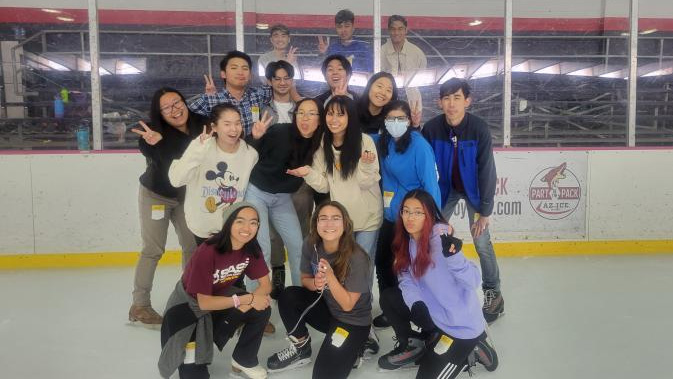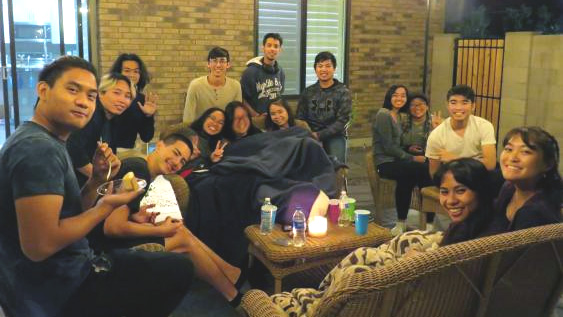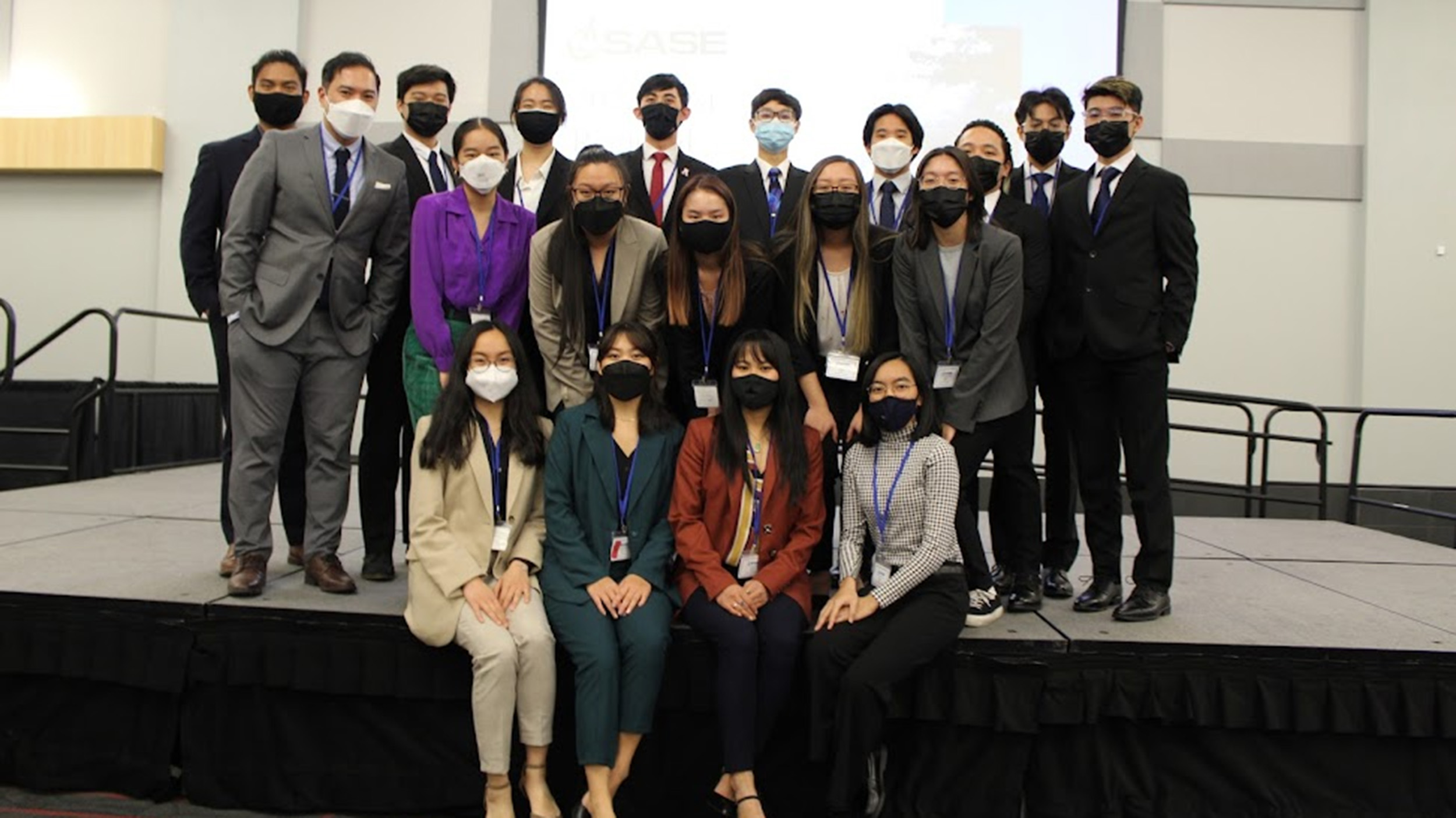
The power of camaraderie
The Society of Asian Scientists and Engineers at ASU strives to enrich students’ academic, professional and social experiences

“It feels like family.”
That is how Azam Khan, a third-year computer science student with a minor in mathematics, describes the Society of Asian Scientists and Engineers, or SASE, a student organization in the Ira A. Fulton Schools of Engineering at Arizona State University.
Whether it’s boosting each other in academics, community service or professional development opportunities, SASE members steadfastly support their fellow students by fostering an inclusive environment that seeks to enable all to thrive.
“We strive for academic excellence,” says SASE president and third-year mechanical engineering student Marissa Edwards. “But equally important is our mission to build a community where everyone feels comfortable and can build connections.”
To SASE members, maintaining academic excellence involves resume reviews, leadership and technical skills workshops and industry presentations, among other communal development opportunities.
Gaining local and national exposure

Members of the Society of Asian Scientists and Engineers take a break from homework at an ice skating social in March 2022. Photo courtesy of Marissa Edwards
In the spirit of maintaining connections, SASE, a subsidiary of ASU’s Asian/Asian Pacific American Student Coalition, or AAPASC, organizes a variety of events for its members. Along with bi-weekly general members’ meetings, the group participates in socials, including its first Formal this year. Students also performed two dances at the AAPASC Culture Fest at ASU in May.
Since the organization’s launch in 2012, the SASE community has encouraged participation in local and national networking events. In February, members participated in the SASE West Regional Conference at the University of Nevada, Las Vegas, a one-day networking experience for SASE chapter members at various universities across the Southwest. ASU’s chapter brought 18 members — the highest number of students at the event from one university.
“We networked and discussed preparing for success in STEM fields as well as how to refine our interpersonal and tech skills,” Edwards says. “We also got to meet people in person whom we had only met virtually. We saw the Hoover Dam and the Las Vegas strip and bonded with new friends over the course of three days.”
On the horizon is the SASE National Convention this fall, which offers ASU chapter members opportunities for similar bonding experiences with SASE members from across the country.
In April, SASE members volunteered at the Arizona Science Olympiad, a national K-12 STEM competition. The ASU chapter’s faculty advisor, Chao Wang, a senior lecturer in the Fulton Schools, recalls it being her favorite activity in the past year.
“It is important to get involved in the community and help cultivate young scientists and engineers to become future members of SASE,” Wang says.
A community within a community

Society of Asian Scientists and Engineers members who couldn’t make it home for Thanksgiving last year were invited to “SASEgiving.” Photo courtesy of Marissa Edwards
SASE currently has about 25 members whose majors span a range of academic disciplines. The group welcomes students at all academic levels who are pursuing degrees in any of the STEM fields, and also welcomes non-Asian students. The organization recruits through the Passport to ASU event presented every fall, but accepts new members throughout the year.
“Via word of mouth, a range of students show up to our socials,” Khan says. “It’s a community to help anyone navigate professional and social experiences.”
Perhaps the most unique aspect of SASE is the highly active participation of alumni. Khan says he and other current members still ask for advice from prior members who have graduated.
SASE maintains a healthy balance between academic and social growth, offering a home away from home for its members.
“I’ve made lifelong friends in this club,” Khan says. “I look forward to building more connections and supporting others the way they have supported me.”
Wang believes SASE is successful because, “it helps students of Asian heritage and other cultures connect and support each other to succeed as scientists and engineers.”

Society of Asian Scientists and Engineers members pictured at the SASE West Coast Conference at the University of Nevada, Las Vegas, in February 2022. Photo courtesy of Paula Phan



































